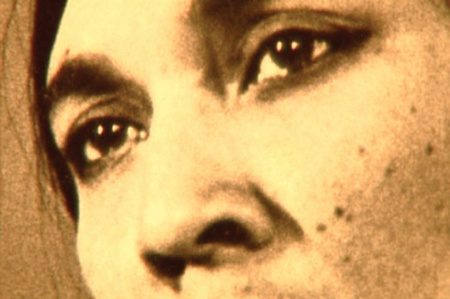Source: Alamy
In the spotlight: the festival features a Victorian London walk, a graphic art show, maths and magic, Kaganof’s Inconsolable Memory film and a gossip game
Inside Out Festival 2014
Venues and sites across London
20-26 October 2014
‘Much Victorian writing was about the night in London, particularly in Soho.’ This inspires ‘A Twilight Walk around Soho’, exploring ‘Soho as it was and as it was imagined’
From the psychology of atrocity to “women, fashion and power”, rumours, radical opera and the continuing lure of the medieval, the fifth Inside Out Festival offers a typically varied banquet of brain food.
Curated by the Culture Capital Exchange in association with Times Higher Education, the event spans the whole week of 20-26 October, takes place on campuses and other venues all over London and is specifically designed to showcase the vast contribution of universities to the capital’s cultural life. An opening discussion chaired by dancer Deborah Bull, director of cultural partnerships at King’s College London, tackles head-on the central issue of “Artists in the Academy” (20 October).
Three leading philosophers at King’s will bring their different perspectives to bear on an even deeper topic, the ultimate question of “Who Are We?”. On 22 October, for example, lecturer in philosophy Sacha Golob will explore “how our conception of sexuality – both sexual desire and sexual identity – shapes the way we understand the self”. He will then go on to consider “how those conceptions of sexuality can be alternately underpinned or undermined by specific political developments”, notably in the light of Michel Foucault’s “repressive hypothesis”, whereby “the modern understanding of authentic or liberated sexuality essentially rests on a trick in which apparent ‘taboo-busting’ is exploited to entrench existing power structures”.
Emily Butterworth, senior lecturer in French at King’s, has a long-term research project on “gossip and talking too much in early modern France”. She has also been collaborating with artist Clare Qualmann since they organised a walk around Bethnal Green in 2009 looking at “sites of gossip”.
Early modernity, as Butterworth sees it, was “obsessed by talk and how to police it effectively” because “the humanist ideal of self-governance included the governance and control of your tongue”. People who failed in this, often assumed to include servants, women and the old, “somehow fell short of the rational, self-controlled, moderate ideal”. Yet along with this went a fascination with what gossip might reveal: “other people’s secrets, knowledge of a separate (female) sphere, even the hidden truth about the self”.
To bring these themes to life, Butterworth and Qualmann are organising what they describe as “a mass game of Chinese whispers” (20 October) inspired by a description of the spread of rumour in the work of the French Renaissance writer Michel de Montaigne.
In “Fifty Years of Illustration” (20 October), Lawrence Zeegen, dean of the School of Design at the London College of Communication, will explore the themes of his new book (with Caroline Roberts) and accompanying exhibition, which continues at the LCC until 31 October. Illustration, he argues, is often regarded by academics as “the wayward cousin kept in the back room, a poor relation of fine art and graphic communication”. Yet in reality, he believes, it is rightly described as “the people’s art” and one that, since the 1960s, has developed “a much more expressive visual language”, as “graphic artists found ways to express themselves, rather than just following commercial constraints”.
To make his case, Zeegen will flag up a series of “stylistic turning points”, “the really important images” from each decade – from the fold-out poster included in the album Bob Dylan’s Greatest Hits to the cover of Maurice Sendak’s book Where the Wild Things Are – that “reflect or even represent their era”.
A discussion on “Women, Fashion and Power” (21 October), tied to an exhibition at the Design Museum, meanwhile, brings together businesswoman and broadcaster Heather Rabbatts; curator and exhibition designer Jenna Rossi-Camus; and Frances Corner, head of the London College of Fashion (and pro vice-chancellor of the University of the Arts London).

Moderator Shahidha Bari, lecturer in Romanticism at Queen Mary University of London, hopes that the panellists will address “the more complicated questions about women and dress” such as “squaring fashion-forwardness with modern feminism”. Episodes such as “the Cabinet ‘cuties’ furore” can illuminate broader issues of “sexual politics and the workplace” and “why/how women are understood/scrutinised in terms of appearance in ways that men are not, and thinking about how we counter that”.
The Inside Out Festival has always been interested in encouraging Londoners to look at familiar places and facets of their city with fresh eyes.
Nadia Valman, senior lecturer in English at Queen Mary, is “struck by how much Victorian writing there is about the night in London, particularly in Soho”. Celebrated examples include Robert Louis Stevenson’s The Strange Case of Dr Jekyll and Mr Hyde and Charles Dickens’ Night Walks.
Some authors were fascinated by the new technologies that allowed theatres, night markets and gin palaces to pour light out on to dark streets, notes Valman, while others explored the very different experiences of the homeless, who were “constantly being moved and didn’t get a chance to rest”. In the third of her Inside Out series of walks, “Victorian Illuminations: A Twilight Walk around Soho” (21 October), she will take people on a tour of “Soho as it was and as it was imagined”. Texts will be projected on to pavements and buildings to encourage further reflections about light and dark.
The old bookcases, oriental carpets and teeming abundance of antiquities often overawe visitors to London’s Freud Museum. But they have also made it a particularly attractive venue for almost 70 exhibitions. To coincide with the opening of the latest, Freud and Eros: Love, Lust and Longing, Joanne Morra, reader in art history and theory at Central Saint Martins, will give a talk on “Contemporary Art and the Freud Museum” (23 October), exploring how different artists have found ways to collaborate with or confront the unique atmosphere of “a multi-layered, multi-purpose space” once described as “Freud’s lair”.
Irish artist and singer Ceara Conway will take her audience into underground medieval London through two site-specific performances on 21 October in the crypt of St Etheldreda’s Church (in Ely Place). This will lead into a round-table discussion on the continuing creative allure of the medieval and its links with more academic approaches. Jessica Barker, a visiting lecturer and PhD candidate at the Courtauld Institute of Art, for example, will describe her research on tombs of married couples, often depicted as embracing or holding hands, and what they tell us about attitudes to family, marriage and death, while also considering why they have provoked such strong reactions in everyone from 19th-century Romantic travellers to the notably unexuberant Philip Larkin.
Along with musical performances ranging from viola masterclasses to Yiddish music hall, the festival will include a screening of Aryan Kaganof’s An Inconsolable Memory (23 October), a 2013 film that considers what it meant to be “coloured” in apartheid South Africa, and the inevitable political compromises involved in cultural life, through the story of the Eoan Opera Group. Yet rather than using straightforward narrative, the documentary reconstructs the events through fragmentary memories and dreamlike sequences.
The post-screening discussion will be led by Rachel Beckles Wilson, professor of music at Royal Holloway, University of London. She plans to move beyond the particular traumatic case to examine questions affecting most of us, such as “Does memory damage communities?”, “What sort of healing can remembering do?”, “How is memory carried in our bodies?” and “Do we have the right to keep our memories to ourselves?”
Although it also includes a “Maths and Computing Magic Show” by Peter McOwan, professor of computer science at Queen Mary (25 October), this year’s Inside Out Festival amply confirms its reputation for never being afraid to ask big questions.
Register to continue
Why register?
- Registration is free and only takes a moment
- Once registered, you can read 3 articles a month
- Sign up for our newsletter
Subscribe
Or subscribe for unlimited access to:
- Unlimited access to news, views, insights & reviews
- Digital editions
- Digital access to THE’s university and college rankings analysis
Already registered or a current subscriber? Login

